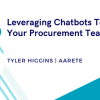Digital transformation is front and center of the C - level agenda. According to a recent survey, 74 percent of businesses either have a digital transformation strategy in place or are in the process of implementing one.
Given the proven ability of digital tools to drive efficiency and innovation, this level of interest is hardly surprising. Today, intelligent automation and machine learning are boosting productivity and optimizing a wide range of back - office operations. Cloud - based platforms, data analytics and mobile applications are redefining the way businesses engage with customers.
Yet many businesses are stalling on their digital journey - and a lack of skills and talent are fundamental obstacles. Among executives surveyed who have a digital strategy in place, 59 percent say they lack staff with integration and migration skills, 64 percent cited a need for more security expertise and 54 percent require more strategic digital transformation skills. Moreover, large enterprises have a harder time filling slots than smaller competitors, compounding marketplace disruption.
Demand for Skills Old and New
To complicate matters, talent requirements are extremely diverse. On one hand, businesses face a longstanding struggle to fill positions in SAP and Java, as these deeply embedded technologies are essential to managing enterprise environments. At the same time, over the past 18 months or so, demand for DevOps, Amazon Web Services (AWS), Site Reliability Engineer (SRE) and other skills related to emerging, cloud - based technologies or methodologies/approaches have soared.
Moreover, businesses are increasingly focused on using automation and artificial intelligence (AI) capabilities to boost productivity and enhance strategic value. This creates a need for skills around robotic process automation (RPA) deployment, as well as data science and analytics to leverage the capabilities of smart tools.
This need for traditional skills as well as new talent reflects the broader quandary facing many businesses. While innovation is the goal, the reality is that maintaining and modernizing existing operations remain essential priorities. As such, the key lies in finding the optimal mix of skills - one that can integrate legacy systems with new technology to drive transformational outcomes.
Automating Drudgery
The good news is that emerging technology can help companies tackle the challenge of identifying, attracting and retaining critical talent.
The process of hiring someone is often a long and complex journey. One basic step is to identify individuals with the right qualifications, either by evaluating submitted credentials or applications, or by monitoring the landscape of potential employees (both those who are actively seeking and those who might be open to a new opportunity). Once identified, the candidate and employer should conduct an ongoing dialogue that involves structured interviews as well as informal contacts. To present an offer, a company needs to ascertain a candidate’s requirements, as well as benchmark industry standards for the level and role under consideration. Upon accepting an offer, a candidate undergoes security and eligibility-to-work clearances prior to onboarding and training. Each step along the way must be accurately documented.
Managing these steps has traditionally been a labor-intensive and time-consuming undertaking that absorbs a significant portion of talent acquisition professionals’ time and energy. Today, RPA tools can execute many of the routine administrative tasks associated with managing the recruitment journey - these include pipelining candidates, capturing data, transferring data from one application to another, processing documents, auto texting and scheduling capabilities, video interviews, etc.
More advanced cognitive applications, meanwhile, apply natural language processing capabilities to enable instant messaging-activated chatbots. These applications can handle routine communications between recruiters and candidates such as descriptions of new job openings, status inquiries and updates to applications, as well as gather data on questions important to the hiring manager. Additionally, these chatbots can provide metrics and insights on the types of candidates applying for the role and the gaps required to close any lack of suitable candidates.
As with other industries and job functions, intelligent automation has allowed recruiters to spend less time on routine, repetitive work and more time focused on value-added activities. Specifically, rather than filling out paperwork or responding to basic questions, they can devote extra time to interacting with candidates at a deeper and more personal level. As such, contrary to the common perception that recruitment and hiring are being taken over by faceless robots, technology is actually helping to humanize the function; specifically, by allowing recruiters to spend more time where it counts - with the candidates, perfecting their art of recruitment.
Data Analytics
Given today’s dynamic job market and the ease with which curriculum vitae (CVs) and résumés can be accessed and shared, recruiters can easily identify candidates who, on paper, are qualified to fill a role. What’s harder is gaining deeper insight into a candidate’s specific skills, as well as their potential alignment with a company’s culture.
Emerging data analytics capabilities are playing an increasingly prominent role to address this challenge. Many recruiters are deploying algorithms that apply various criteria to evaluate personality assessments that determine if a given candidate is likely to be a good fit. Some are applying such algorithms to candidates’ social media footprints to dig deeper into the fit between personality and business culture as well as to assess the percentage of likelihood that a candidate will accept an offer.
Additionally, analytic tools such as Power BI, R Analytics, Python, SaaS, etc., are allowing recruiting leaders and hiring managers to glean deeper insights about national and international talent pools, projected candidate costs and whether to fulfill a role with an employee or contractor.
Build vs. Buy
Talent acquisition specialists seeking to deploy technology to enhance the recruitment process have a variety of off-the-shelf options from which to choose. Cloud-based HR solutions are becoming increasingly commonplace and HR processes such as onboarding and offboarding are prime candidates for RPA initiatives. In many cases, tailoring the capabilities to a company’s specific requirements can be viable. Indeed, a technology services company that develops specialized capabilities around talent acquisition can enhance its own competitive positioning, as well as deliver a value-added service to its customers.
In today’s marketplace, making bad hires simply isn’t an option. A company that invests time and money to attract, evaluate and hire a candidate only to have that candidate leave six months into the job, risks seriously eroding its competitive advantage.









